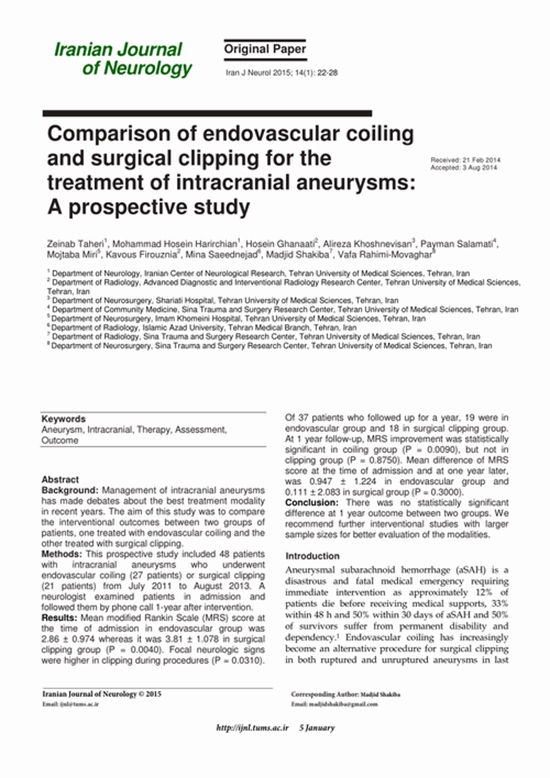Comparison of endovascular coiling and surgical clipping for the treatment of intracranial aneurysms: A prospective study
The aim of this study was to compare the interventional outcomes between two groups of patients, one treated with endovascular coiling and the other treated with surgical clipping

Background: Management of intracranial aneurysms has made debates about the best treatment modality in recent years. The aim of this study was to compare the interventional outcomes between two groups of patients, one treated with endovascular coiling and the other treated with surgical clipping.
Methods: This prospective study included 48 patients with intracranial aneurysms who underwent endovascular coiling (27 patients) or surgical clipping (21 patients) from July 2011 to August 2013. A neurologist examined patients in admission and followed them by phone call 1-year after intervention.
Results: Mean modified Rankin Scale (MRS) score at the time of admission in endovascular group was 2.86 ± 0.974 whereas it was 3.81 ± 1.078 in surgical clipping group (P = 0.0040). Focal neurologic signs were higher in clipping during procedures (P = 0.0310). Of 37 patients who followed up for a year, 19 were in endovascular group and 18 in surgical clipping group. At 1 year follow-up, MRS improvement was statistically significant in coiling group (P = 0.0090), but not in clipping group (P = 0.8750). Mean difference of MRS score at the time of admission and at one year later, was 0.947 ± 1.224 in endovascular group and 0.111 ± 2.083 in surgical group (P = 0.3000).
Conclusion: There was no statistically significant difference at 1 year outcome between two groups. We recommend further interventional studies with larger sample sizes for better evaluation of the modalities.






ارسال به دوستان